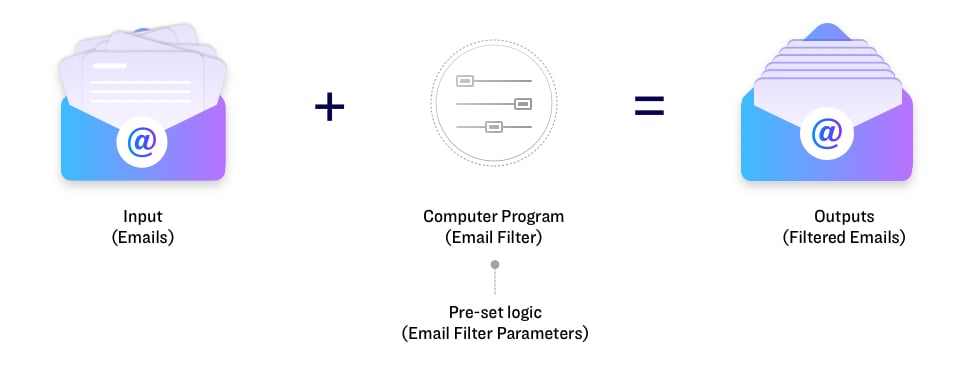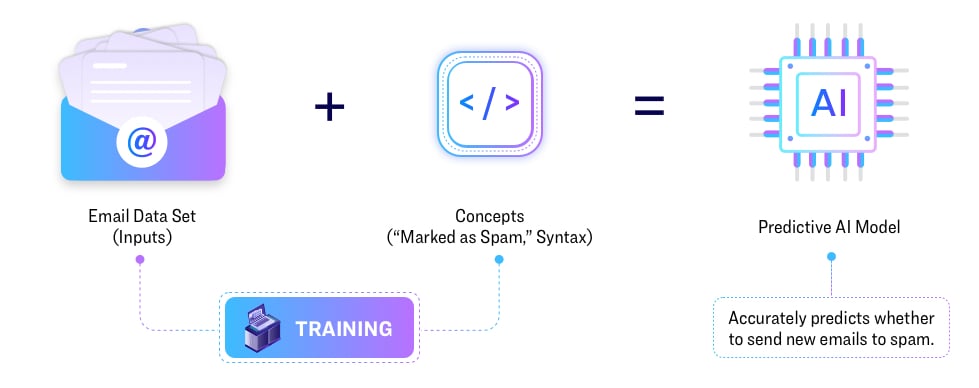However, if John Doe sends an email with the subject “The apples are finished,” despite the two subjects being similar in sentiment, that email will not be filtered out, solely because they do not match in wording. Other rephrasings, like “The apples are all finished,” “There are no apples left,” “There are no more apples left,” “The apples are gone” or “The apples are all gone,” etc. will also require their own individual filters, as will miswordings, like “Their are no more apples.” Take all this into account and what should be an automated task, quickly becomes inefficient, if not impossible for humans to complete.
With machine learning algorithms, however, they actually learn from the data you’ve uploaded and create parameters based on that data. For instance, if you fed a machine learning algorithm every email from John Doe that you marked as spam, it would find patterns in that data such as syntax or sentiment and use that new knowledge to build its own filtering algorithm with those parameters. The process is like the below:
Further, if it makes a mistake, marking a wanted email as spam or vice versa, your actions (removing it from or adding it to your spam folder) improves the algorithm, learning from its blunder, so it performs even better over time.
Why do we want machines to learn
Think about it. If a sheepherder trains his border collie to round up his herd, that’s less work on the herder, right? It’s a similar concept here. Machine learning allows for technologies like computer vision to be applied to menial tasks like image search and moderation so that the computer can do that work for us.
In computer vision, machine learning algorithms enable computers not only to see what is in a visual input but analyze it and learn concepts relevant to that input. For example, for horses, it will be shown several examples of horses and learn concepts like, e.g., “wild mustang” or “racehorse.” When next an entirely new image of a horse is uploaded, machine learning allows the computer vision model to see and recognize it as such, and apply the relevant concept.
So there we have it. While machine learning isn’t the only term you’ll need to know as you delve deeper into the world of AI, it’s a great place to start.
Sign up for your free API key to create your own machine learning AI model.






